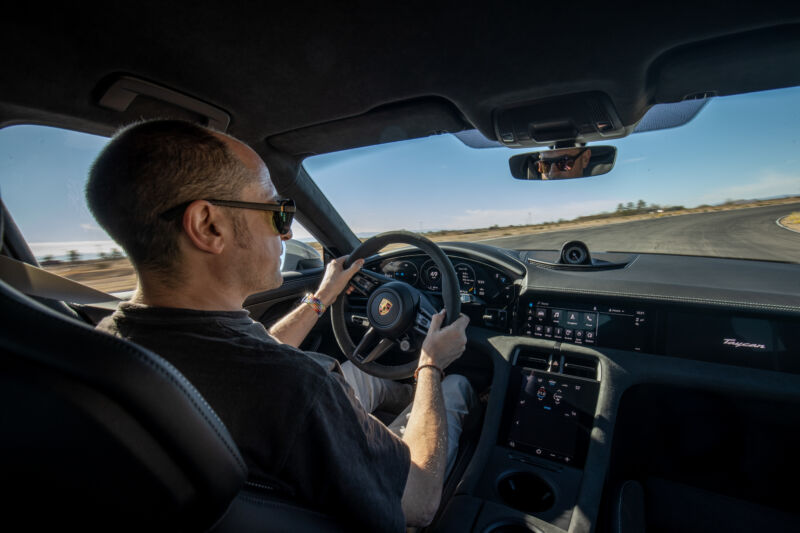
People say only enthusiasts care about steering feel, but that’s not true
By Jonathan M. Gitlin
In almost every regard, new cars are better than they’ve been at any time in their history. They’re safer than they used to be—though that is less true for women. Powertrains, particularly battery electric ones, are more powerful and more efficient, which helps to compensate for the extra weight of that added safety equipment. Vehicles are far more reliable, at least for their first 100,000 miles, and even cheap cars come with standard equipment that would seem like science fiction to drivers from just a few decades ago.
They ride better; they stop better—so everything’s great, right? The problem is that modern cars almost invariably feel a bit boring to drive. The issue is more acute the longer you’ve been driving, as you might expect, since the cause is technological progression—specifically, power steering.
What happened to steering feel?
For much of the car’s existence, steering was entirely unassisted. The driver turns the wheel connected to a steering column that, through links and pivots and usually a gear, turns the front wheels in either direction. That setup was marvelous for feedback, but it wasn’t great in terms of the effort required to turn the wheel, particularly at lower speeds.
Drivers of a certain age will tell you that unassisted steering is the purest way to drive—and therefore the best. I am sympathetic to this argument, up to a point.
Steering became more of an issue as cars got heavier and front tires got wider, so cars gained hydraulic power-assisted steering to compensate. Hydraulic pistons reduce the effort required to steer the front wheels, and there’s not much inertia, but the steering system still communicated forces back from the front wheels and through the steering to the driver’s hands.
The problem is that running a hydraulic system requires enough power to be noticeable in fuel efficiency. These days, we have compact and powerful electric motors that can assist in turning the front wheels. There are fewer moving parts, there are no hydraulic lines or fluid to worry about, and the systems are getting cheaper. Being electrically controlled means you can even accommodate features like lane-keeping assistance or autosteering.
The downside is that the motors are also pretty good at filtering out road forces from traveling back up from the front wheels to the steering wheel.
Typically, electric power-assisted steering works via a small motor mounted on the steering column. It responds to a torque sensor that tells the wheels how much to turn and in which direction. That process requires a bit of time for the motor to revolve, which adds just enough inertia to filter out road forces from being directed back up the column to the driver’s hands.
To make matters worse, the suspension geometry often further compromises steering feel in favor of things like putting less load into tie-rods, which allows for smaller and cheaper electric motors.
I’m far from the first to notice this problem, nor the first to say that it’s a bad thing. Where I will differ from my peers is when they say that steering feel doesn’t matter to anyone but car journalists. Even people who regard a car as just an appliance to get from point A to B will prefer driving a car with good steering.
Perhaps the greatest exponent of this idea was Richard Parry-Jones. He was a long-time Ford employee who rose to become chief technology officer of the company after overseeing a string of products (the Focus, Mondeo, Puma, and Ka) that were a joy to drive, even at the basic trim levels.
Depressingly, the problem is not evenly distributed. Instead of mounting the electric motor to the steering column, it’s possible to fit it to the steering rack instead. This approach requires a larger motor, but there’s less gearing, and it’s easier for road forces to act on the motor, which in turn get relayed back up the steering as feedback.
With sufficient motivation, cars can still be engineered to provide engagement, and an engaged driver is usually an alert one. But good steering takes time and costs money to develop and tune, on top of the increased bill of materials. So for now, an emphasis on steering is the preserve of expensive brands like Porsche. For cars built to a price, we’re still waiting for a 21st-century Parry-Jones to find a way to inject some fun. (Ars Technica)
Follow this link to join our WhatsApp group: Join Now
Be Part of Quality Journalism |
Quality journalism takes a lot of time, money and hard work to produce and despite all the hardships we still do it. Our reporters and editors are working overtime in Kashmir and beyond to cover what you care about, break big stories, and expose injustices that can change lives. Today more people are reading Kashmir Observer than ever, but only a handful are paying while advertising revenues are falling fast. |
| ACT NOW |
| MONTHLY | Rs 100 | |
| YEARLY | Rs 1000 | |
| LIFETIME | Rs 10000 | |












